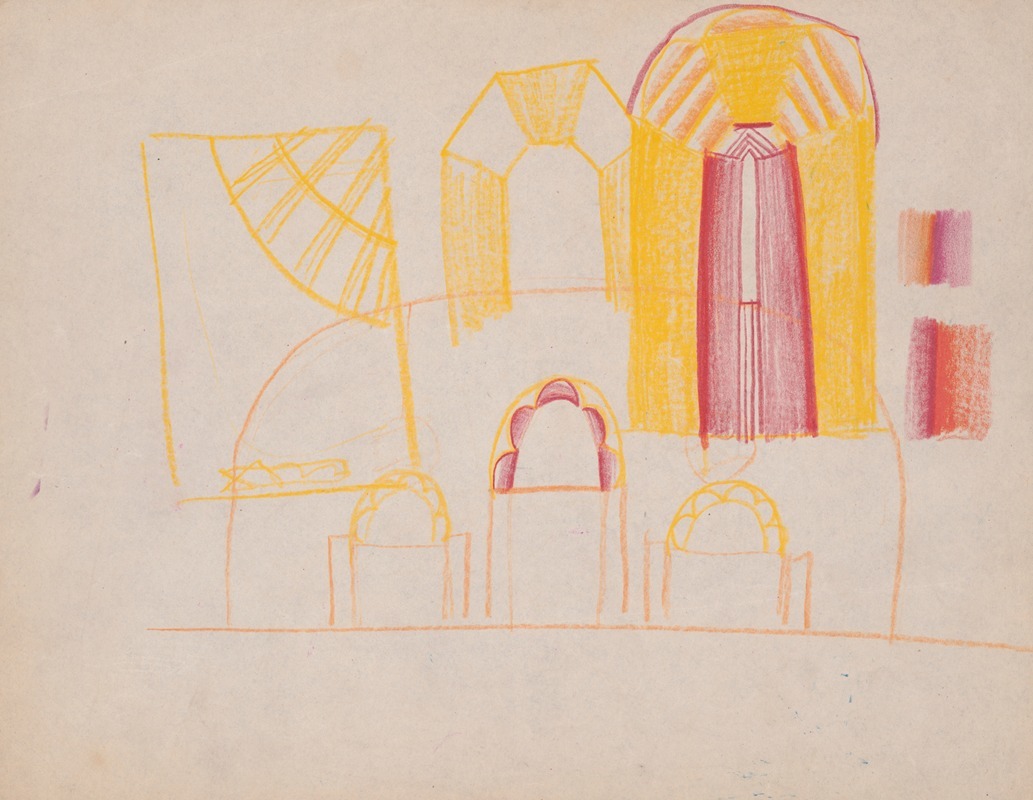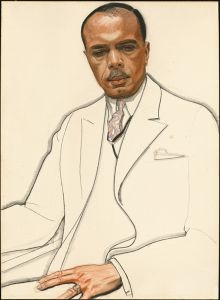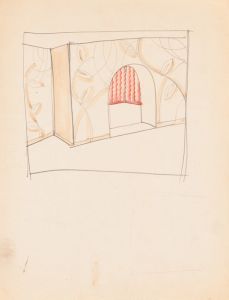
Design drawings for miscellaneous interiors, some possibly related to the Hotel St. George, New York, NY. Sketch for miscellaneous interior
A hand-painted replica of Winold Reiss’s masterpiece Design drawings for miscellaneous interiors, some possibly related to the Hotel St. George, New York, NY. Sketch for miscellaneous interior, meticulously crafted by professional artists to capture the true essence of the original. Each piece is created with museum-quality canvas and rare mineral pigments, carefully painted by experienced artists with delicate brushstrokes and rich, layered colors to perfectly recreate the texture of the original artwork. Unlike machine-printed reproductions, this hand-painted version brings the painting to life, infused with the artist’s emotions and skill in every stroke. Whether for personal collection or home decoration, it instantly elevates the artistic atmosphere of any space.
Winold Reiss was a German-American artist and designer known for his work in interior design, portraiture, and graphic arts. Born in Karlsruhe, Germany, in 1886, Reiss immigrated to the United States in 1913, where he became a prominent figure in the American art scene. His work is characterized by its vibrant use of color and its blending of European modernist styles with American themes and subjects.
Reiss's contributions to interior design are particularly notable, as he brought a unique artistic vision to the spaces he created. One of his significant projects involved design work for the Hotel St. George in Brooklyn, New York. The Hotel St. George was a renowned establishment, known for its grandeur and luxurious accommodations. It was a popular destination for travelers and a significant landmark in New York City during the early to mid-20th century.
The design drawings attributed to Winold Reiss for miscellaneous interiors, possibly related to the Hotel St. George, reflect his distinctive style and approach to interior decoration. Reiss was known for his ability to integrate art into architecture, creating spaces that were both functional and aesthetically pleasing. His designs often included bold colors, geometric patterns, and a mix of cultural motifs, which were innovative at the time.
Reiss's work in interior design extended beyond the Hotel St. George. He was involved in various projects across the United States, including designing interiors for restaurants, theaters, and other public spaces. His ability to adapt his artistic skills to different environments made him a sought-after designer during his career.
In addition to his interior design work, Winold Reiss was also a prolific portrait artist. He is well-known for his portraits of Native Americans, African Americans, and other cultural groups, which he approached with a sense of respect and dignity. His portraits are celebrated for their vibrant colors and the way they capture the essence of his subjects.
Reiss's influence on American art and design is significant. He was a pioneer in introducing modernist design principles to American interiors, and his work helped shape the aesthetic of the early 20th century. His legacy continues to be recognized in the fields of art and design, and his contributions remain a point of reference for contemporary designers.
Overall, Winold Reiss's design drawings for miscellaneous interiors, including those possibly related to the Hotel St. George, exemplify his innovative approach to integrating art and design. His work continues to be appreciated for its artistic merit and its impact on the development of modern interior design in the United States.





![[Graphic designs for Fortune magazine.] [Study for cover with telephone lines and wings over the globe](/imgs/249241/s/winold-reiss-graphic-designs-for-fortune-magazine-study-for-cover-with-telephone-lines-and-wings-over-the-globe-5933e802.jpg)
![Design drawings for miscellaneous interiors, some possibly related to the Hotel St. George, New York, NY.] [Sketch for miscellaneous interior .](/imgs/249277/s/winold-reiss-design-drawings-for-miscellaneous-interiors-some-possibly-related-to-the-hotel-st-george-new-york-ny-sketch-for-miscellaneous-interior--6b46aedb.jpg)
![Design drawings for the Theodore Weicker Apartment Building.] [Study for metalwork gate](/imgs/249281/s/winold-reiss-design-drawings-for-the-theodore-weicker-apartment-building-study-for-metalwork-gate-8a05d5e9.jpg)
![Design for fine art print, ‘The Mad Dancer’.] [Woodcut print](/imgs/249286/s/winold-reiss-design-for-fine-art-print-the-mad-dancer-woodcut-print-c03b5ea2.jpg)
![Designs for Alamac Hotel Congo Room, 71st and Broadway, New York, NY.] [Six color studies of interior, furniture, and murals](/imgs/249310/s/winold-reiss-designs-for-alamac-hotel-congo-room-71st-and-broadway-new-york-ny-six-color-studies-of-interior-furniture-and-murals-3a813bdb.jpg)
![Designs for Shellball Apartments, 8300 Talbot St. at Lefferts Blvd., Kew Gardens, New York, NY.] [Perspective drawing of lobby](/imgs/249322/s/winold-reiss-designs-for-shellball-apartments-8300-talbot-st-at-lefferts-blvd-kew-gardens-new-york-ny-perspective-drawing-of-lobby-e19c70e0.jpg)

![Miscellaneous small sketches for inlaid table tops.] [Design with green lines and yellow wave motif](/imgs/249436/s/winold-reiss-miscellaneous-small-sketches-for-inlaid-table-tops-design-with-green-lines-and-yellow-wave-motif-474c01c.jpg)
![Miscellaneous small sketches for inlaid table tops.] [Design with red and blue cubic motif](/imgs/249439/s/winold-reiss-miscellaneous-small-sketches-for-inlaid-table-tops-design-with-red-and-blue-cubic-motif-47eb56d2.jpg)
![Studies of New York Coliseum, Columbus Circle, Convention Center.] [Color study perspective](/imgs/249444/s/winold-reiss-studies-of-new-york-coliseum-columbus-circle-convention-center-color-study-perspective-9184607e.jpg)


